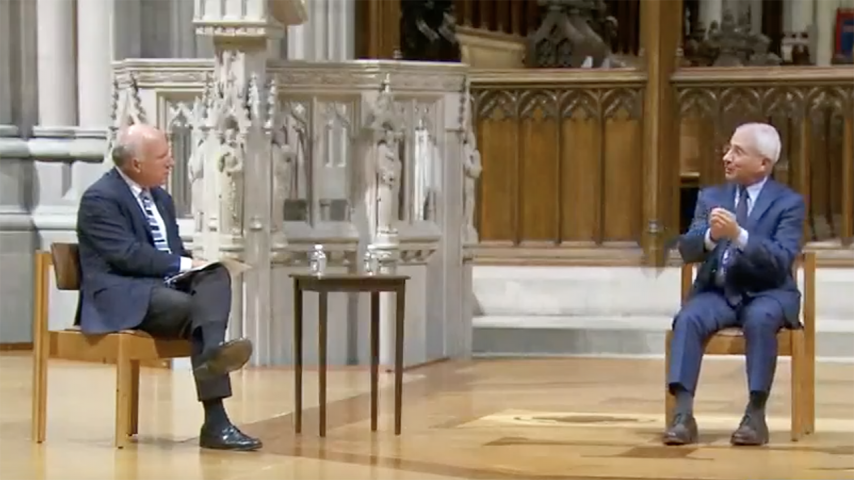
White House coronavirus health official Dr. Anthony Fauci spoke at the Washington National Cathedral on Thursday, November 12, to address virus surge and share encouraging news about vaccines.
The situation in the United States is difficult with 10 million infections, 250,000 deaths, and 60,000 hospitalizations. Health officials recently reported 143,000 infections in a single day.
Fauci said that simple public health measures work. These measures include the universal wearing of masks, physical distancing, avoiding crowded places, being outdoors vs. indoors, and handwashing.
“It sounds simple in the context of this ominous outbreak, but in fact [these measures] can turn things around,” he said.
Since May, the National Institute of Building Sciences hosted a series of COVID-19 virtual town halls that covered the spectrum of building safety and returning to indoor spaces. These include:
- Preparing for Reentering Buildings
- Mental Health and Sanitation of COVID-19 Facilities
- The Future of Design and Construction
- Healthy Buildings and the Effect on Public Health
There have been many epidemics that were near-pandemics, and buildings play a key role in either protecting us or exacerbating problems.
“This is not rocket science, we’ve long known how to operate our buildings effectively,” said Joseph G. Allen, Assistant Professor with the Harvard T.H. Chan School of Public Health, in August.
Similarly to Fauci, Allen said healthy buildings address transmission with control strategies, proper ventilation and filtration, universal and protective face coverings, and distancing. Prioritizing work from home also helps.
How Did We Get Here?
The United States isn’t alone with rising surge numbers. The United Kingdom and parts of Europe now are in the same boat, Fauci said.
Piecemeal reopening approaches to handle the pandemic has not worked.
“We did not act in a unified way,” Fauci said. “We had too many individual approaches towards how we were going to handle the outbreak. Our baseline never came down to the low level we wanted it to be. So, when community spread came in as we tried to open the country, it just soared right up.”
The U.S. has an enormous amount of virus community spread, which makes it more difficult to contain it by identification, isolation and contact tracing.
Fauci added that some people may be experiencing COVID fatigue or be tempted to let their guards down, especially with the holidays approaching and with the promise of vaccines soon coming.
But now’s the time to double down on public health measures.
This winter, Fauci said that if Americans “push together as a group” and do it in a uniform way – we can turn around the 140,000 daily infections. And when it comes to future outbreaks, the lessons learned from COVID-19 will allow for greater national pandemic preparedness.
Vaccines on The Horizon
There are two vaccines that are showing great promise and efficacy.
Much has been reported about the vaccine coming out of Pfizer. Fauci said this vaccine probably is close to 95 percent effective. Another from Moderna is nearly identical, and Fauci expects this vaccine will be evaluated within the next few days to week.
“What science has done in an unprecedented way, if this were 15 to 20 years ago, it would’ve taken a few years to get to where we are now,” Fauci said. “The idea what we went from recognition of the virus on July 9 of the sequence to a Phase 1 trial within 60 days to a Phase 3 trial a few months later to a vaccine that we’ll be giving to people next month is extraordinary.”
Starting December, health officials expect to start rolling out vaccines to those who need it most. The standard prioritization likely will be as follows:
- Frontline health care workers
- Those with underlying health conditions and seniors
- School children and teachers
Fauci expects by the end of the first or second quarter of 2021, a vaccine will be available to the general population.




